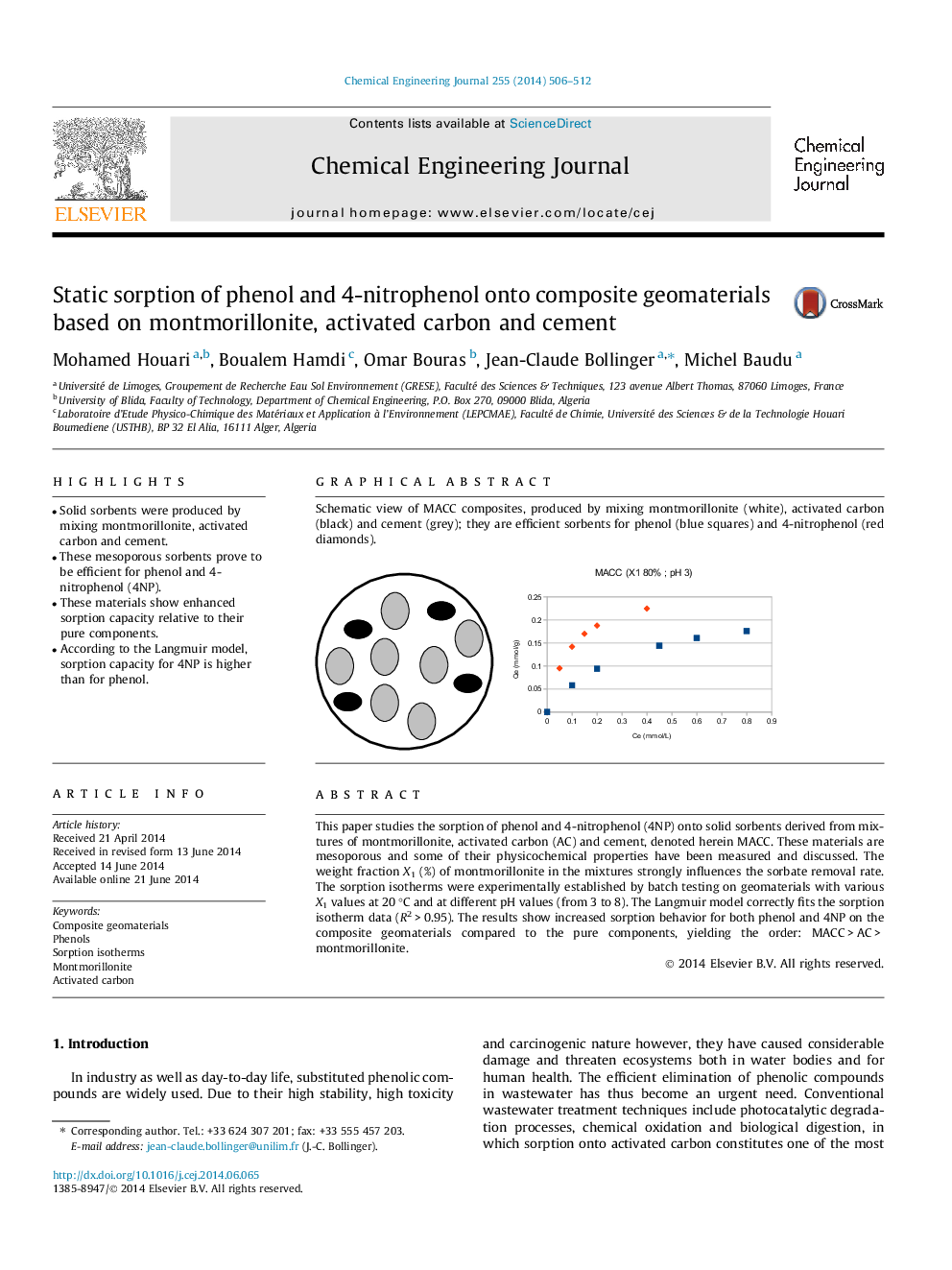| Article ID | Journal | Published Year | Pages | File Type |
|---|---|---|---|---|
| 147075 | Chemical Engineering Journal | 2014 | 7 Pages |
•Solid sorbents were produced by mixing montmorillonite, activated carbon and cement.•These mesoporous sorbents prove to be efficient for phenol and 4-nitrophenol (4NP).•These materials show enhanced sorption capacity relative to their pure components.•According to the Langmuir model, sorption capacity for 4NP is higher than for phenol.
This paper studies the sorption of phenol and 4-nitrophenol (4NP) onto solid sorbents derived from mixtures of montmorillonite, activated carbon (AC) and cement, denoted herein MACC. These materials are mesoporous and some of their physicochemical properties have been measured and discussed. The weight fraction X1 (%) of montmorillonite in the mixtures strongly influences the sorbate removal rate. The sorption isotherms were experimentally established by batch testing on geomaterials with various X1 values at 20 °C and at different pH values (from 3 to 8). The Langmuir model correctly fits the sorption isotherm data (R2 > 0.95). The results show increased sorption behavior for both phenol and 4NP on the composite geomaterials compared to the pure components, yielding the order: MACC > AC > montmorillonite.
Graphical abstractSchematic view of MACC composites, produced by mixing montmorillonite (white), activated carbon (black) and cement (grey); they are efficient sorbents for phenol (blue squares) and 4-nitrophenol (red diamonds).Figure optionsDownload full-size imageDownload as PowerPoint slide
